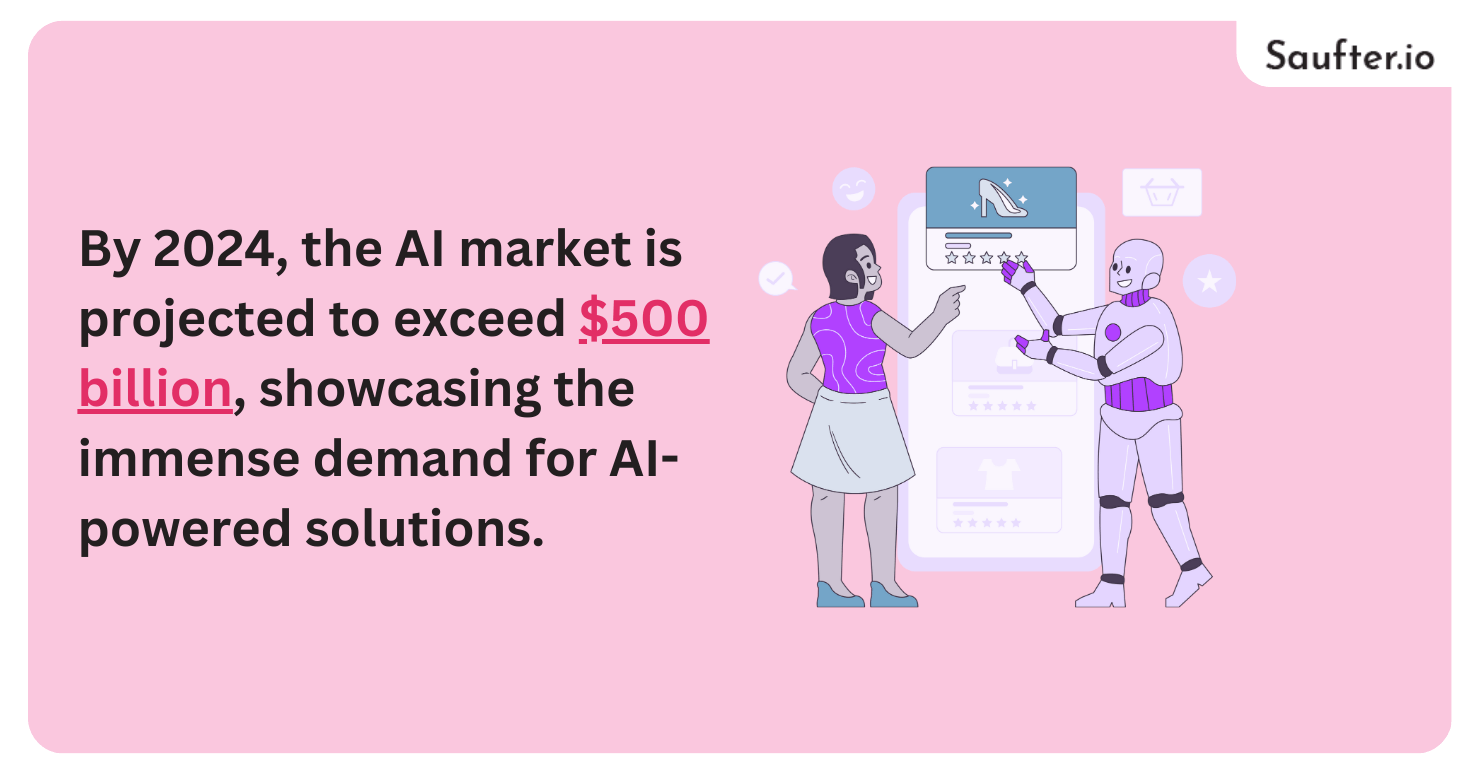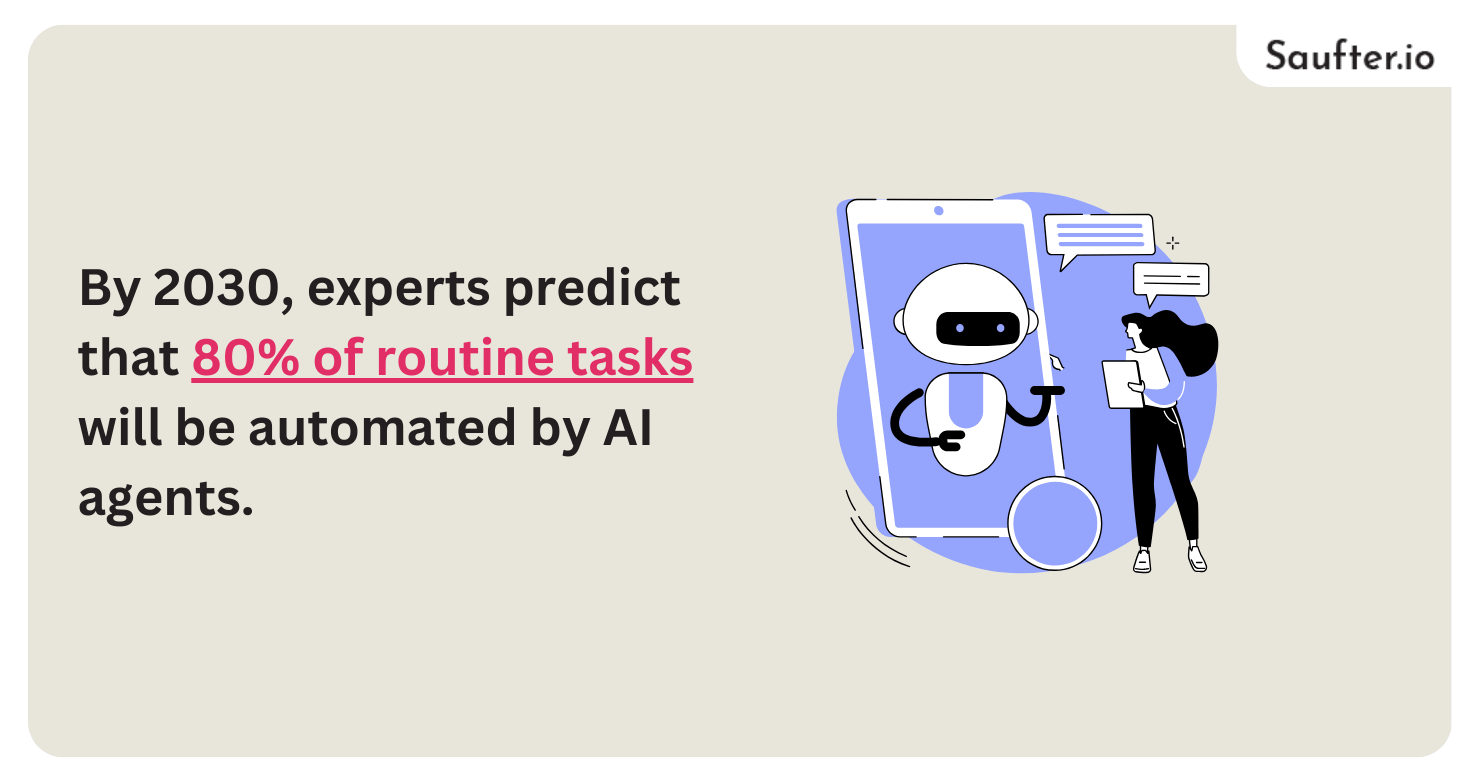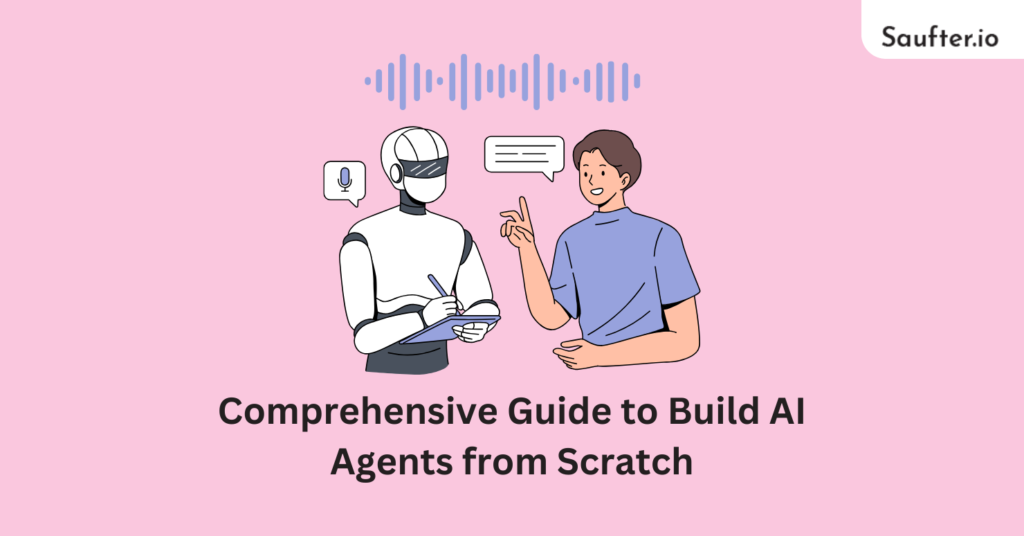Last Updated: July 2025
Artificial Intelligence (AI) is reshaping industries and redefining how we interact with technology. AI agents are at the heart of this revolution—intelligent systems that automate tasks, analyze data and deliver personalized experiences.

By 2025, the AI market is projected to exceed $500 billion, showcasing the immense demand for AI-powered solutions. If you want to dive into this transformative field, this guide will help you understand how to build AI agents from scratch, covering essential steps, best practices, and real-world applications.
This guide simplifies the process of building robust and impactful AI agents, whether you’re an AI enthusiast, a developer, or a business owner eager to leverage AI.
What Are AI Agents?

AI agents are systems that have been built to understand their surroundings and collect data, analyze it, and perform tasks that are by their goals. They can run on their own or cooperate with humans, and this makes them suitable for different fields.
Some well-known examples of AI agents include:
- Chatbots: Virtual assistants, such as Siri or Alexa, can, for instance, answer user questions in real time.
- Recommendation Engines: Netflix and Amazon, for example, use AI agents to give their customers recommendations of various content and products that are more in line with their preferences.
- Autonomous Vehicles: AI agents in driverless cars enable them to choose the correct path and, in addition, ensure the safety of the passengers.
These smart systems have become indispensable in running processes, ensuring better decision-making, and improving user experience due to their example usage of AI.
Why Build AI Agents?
Creating AI agents brings numerous benefits, whether you’re a developer or an organization. Here’s why learning how to build AI agents is worth your time:
- Automation: AI agents take over repetitive tasks, increasing efficiency and freeing humans for more strategic roles.
- Personalization: They analyze user behavior to deliver tailored experiences, boosting engagement.
- Cost Efficiency: Automating tasks with AI agents reduces operational costs and improves ROI.
- Scalability: AI agents can handle increasing workloads without compromising performance, making them ideal for growing businesses.
For example, the healthcare industry has seen diagnostic AI agents achieve accuracy rates of over 90%, significantly improving patient outcomes.
Applications of AI Agents
AI agents are revolutionizing industries by offering solutions that were once considered impossible:
- Customer Support: Companies use chatbots to handle queries 24/7, improving response times and customer satisfaction.
- Healthcare: AI agents assist in early diagnosis, treatment planning, and patient monitoring, transforming care delivery.
- Finance: Fraud detection systems powered by AI agents analyze transactions to identify suspicious activities in real-time.
- Education: Platforms like Duolingo use AI agents to adapt lessons to individual learning paces.
- Retail: Recommendation systems predict customer preferences, driving sales and enhancing shopping experiences.
The versatility of AI agents makes them a critical component of modern solutions.
How to Build AI Agents

Building AI agents involves a mix of creativity, strategy, and technical knowledge. While coding plays a role, understanding the broader framework is just as important. Here’s a step-by-step approach to build AI agents effectively:
Step 1: Define the Purpose
Every AI agent starts with a clear goal. Identify the problem you aim to solve, whether it’s automating tasks, improving customer engagement, or optimizing decision-making processes.
Step 2: Choose the Right Tools
Select tools and frameworks that align with your goals. Some popular options include:
- Machine Learning Platforms: TensorFlow, PyTorch
- APIs for AI Models: OpenAI, Hugging Face
- Data Processing Tools: Pandas, NumPy
Step 3: Gather and Prepare Data
Data is the backbone of any AI agent. Collect relevant datasets, clean and preprocess them to ensure accuracy, and consider using synthetic data if real-world data is limited.
Step 4: Develop Intelligent Logic
The core of an AI agent lies in its reasoning capabilities. Use algorithms that enable it to learn from data, adapt to new scenarios, and make decisions aligned with its purpose.
Step 5: Test and Iterate
Testing is crucial to refine your AI agent. Simulate real-world conditions to evaluate its performance, identify weaknesses, and make improvements.
Best Practices for Building AI Agents
To create successful AI agents, keep these best practices in mind:
1. Start Simple
Begin with a basic version of your AI agent and add features as needed. This approach minimizes complexity and ensures a smoother development process.
2. Prioritize User Experience
An AI agent’s effectiveness depends on how well it interacts with users. Focus on creating clear, responsive, and intuitive systems.
3. Ensure Ethical AI
AI agents should operate responsibly. Use unbiased data, respect user privacy, and adhere to ethical guidelines to build trust with your audience.
4. Stay Adaptable
The AI landscape evolves rapidly. Keep your agent adaptable to new tools, technologies, and user needs.
Challenges in Building AI Agents
While the process to build AI agents is rewarding, it also comes with challenges:
- Data Quality: Poor-quality or biased data can compromise the agent’s performance.
- Resource Constraints: Developing and running AI agents requires significant computational resources.
- Algorithm Complexity: Designing efficient and accurate algorithms demands expertise.
- Ethical Concerns: Addressing issues like data privacy, fairness, and transparency is essential for responsible AI development.
Being aware of these challenges can help you plan effectively and overcome obstacles.
Future Trends in AI Agents
The future of AI agents is bright and filled with opportunities. Advancements in areas like natural language processing, computer vision, and general AI will make these systems more intuitive and powerful.
Emerging trends include:
- AI and IoT Integration: AI agents working with connected devices for smarter homes and industries.
- Human-Centric AI: Systems designed to collaborate seamlessly with humans, enhancing productivity and decision-making.
- Sustainability Solutions: AI agents addressing climate change, resource optimization, and energy efficiency.
These developments highlight the transformative potential of AI agents in shaping the future.
How Many Types of Agents Are There in Artificial Intelligence?

Artificial Intelligence encompasses a variety of agent types, each designed to address specific challenges and environments. Understanding the types of agents in AI is crucial for selecting the right model for your project. These agents can be broadly categorized into five main types:
Simple Reflex Agents:
These agents are designed to function in real-time environments, reacting to certain stimuli through predefined algorithms. They are not dependent on past experiences or predictions which makes them easier but are limited by complex scenarios. For example, a thermostat modifies the temperature based on the immediate temperature.
Model-Based Reflex Agents:
These operate on the principle of simple reflex agents but in addition, they have an inbuilt world model. They take into account both the current inputs and historical data, thus creating more reliable decisions. A case in point is a self-driving car that navigates the traffic based on current and past recorded paths.
Goal-Based Agents:
These agents act with specific goals in mind, evaluating possible paths to follow in order to realize them. They take into account the effect of their actions on the environment and hence are very efficient in complex tasks like organizing the processing of online purchases to be delivered within the shortest time possible or scheduling the disbursement of goods from a warehouse.
Utility-Based Agents:
Going a step further, these agents maximize “utility,” or a measure of satisfaction, by evaluating the best possible outcome among alternatives. These agents are more resilient than those of dynamic environments like trading automation systems, which are reactively responding to market moves.
Learning Agents:
The most advanced among the types of agents in AI, learning agents adapt and improve over time. They leverage machine learning techniques to refine their behavior based on feedback and new data, making them indispensable in fields like personalized healthcare or fraud detection.
Each of these types of agents in AI serves a unique purpose, and selecting the right one depends on the complexity and requirements of your application. By understanding these distinctions, developers can build AI solutions tailored to specific needs, ensuring optimal performance.
The Main Task of an AI Agent Are

AI agents are designed to perform specific tasks that mimic human intelligence and decision-making. The main task of an AI agent are based on perceiving the environment, analyzing data, and taking appropriate actions to achieve set goals.
Perception and Data Gathering:
The AI agent’s first operation is to perceive its surroundings or will register its environment. This can be seen in collecting data through sensors, cameras, or APIs. For instance, an autonomous vehicle is an agent that continually receives real-time data on road conditions, traffic, and obstacles.
Data Processing and Analysis:
Once the data has been collected, AI agents analyze it in order to generate meaningful insights. They apply algorithms and models to interpret the data, identify the regularities, and forecast the phenomena. Among other things, the proper operation of agents such as recommendation systems or diagnostic/hospital units is one of the most important subjects for this issue.
Decision-Making:
AI agents determine the optimal improvement way based on analyzed data. The example, chatbots choose one of the responses to a user inquiry and trading bots conclude the right time to buy or sell stocks.
Action Execution:
AI agents at the end take the selected action and submit the completed task to the environment or end users interacting with them.
Saufter: Revolutionizing Email Marketing with AI

Saufter.io simplifies and enhances email marketing through advanced AI automation. It creates tailored campaigns, delivers fresh weekly suggestions, and provides actionable insights with real-time analytics. From content creation to performance tracking, Saufter ensures your email marketing strategy stays innovative and impactful.
Key Features:
- Automated Email Campaigns: Saufter’s AI crafts highly personalized campaigns based on customer behavior, ensuring they align with your strategy. After your approval, these campaigns are seamlessly deployed, saving time and maximizing engagement. Weekly campaign suggestions keep your email strategies innovative by delivering fresh, data-driven ideas directly to your inbox.
- SEO Optimization: The AI-driven SEO feature automates knowledge-based article suggestions, recommending keywords and trending topics. This ensures your content aligns with audience needs, boosts search rankings, and enhances overall discoverability.
- Behavior Analysis and Journey Tracking: Saufter’s AI tracks every stage of the customer journey—from user creation and bug reports to refunds and critical issues—delivering actionable insights in real time. By flagging customer issues promptly, it empowers businesses to address concerns proactively and optimize the customer experience.
Conclusion

Learning to build AI agents is an invaluable skill in today’s tech-driven world. From defining their purpose and selecting the right tools to overcoming challenges and keeping up with trends, creating AI agents involves a blend of strategic planning and innovation.
By 2030, experts predict that 80% of routine tasks will be automated by AI agents.
As AI continues to revolutionize industries, those equipped to harness its potential will lead the charge in driving progress and solving complex problems. With the global AI market expanding at an unprecedented rate, now is the perfect time to develop expertise in building AI agents.
By mastering this skill, you’re not only opening doors to exciting career opportunities but also contributing to a future where technology empowers and enriches lives. Start today, and be a part of the AI revolution!

















